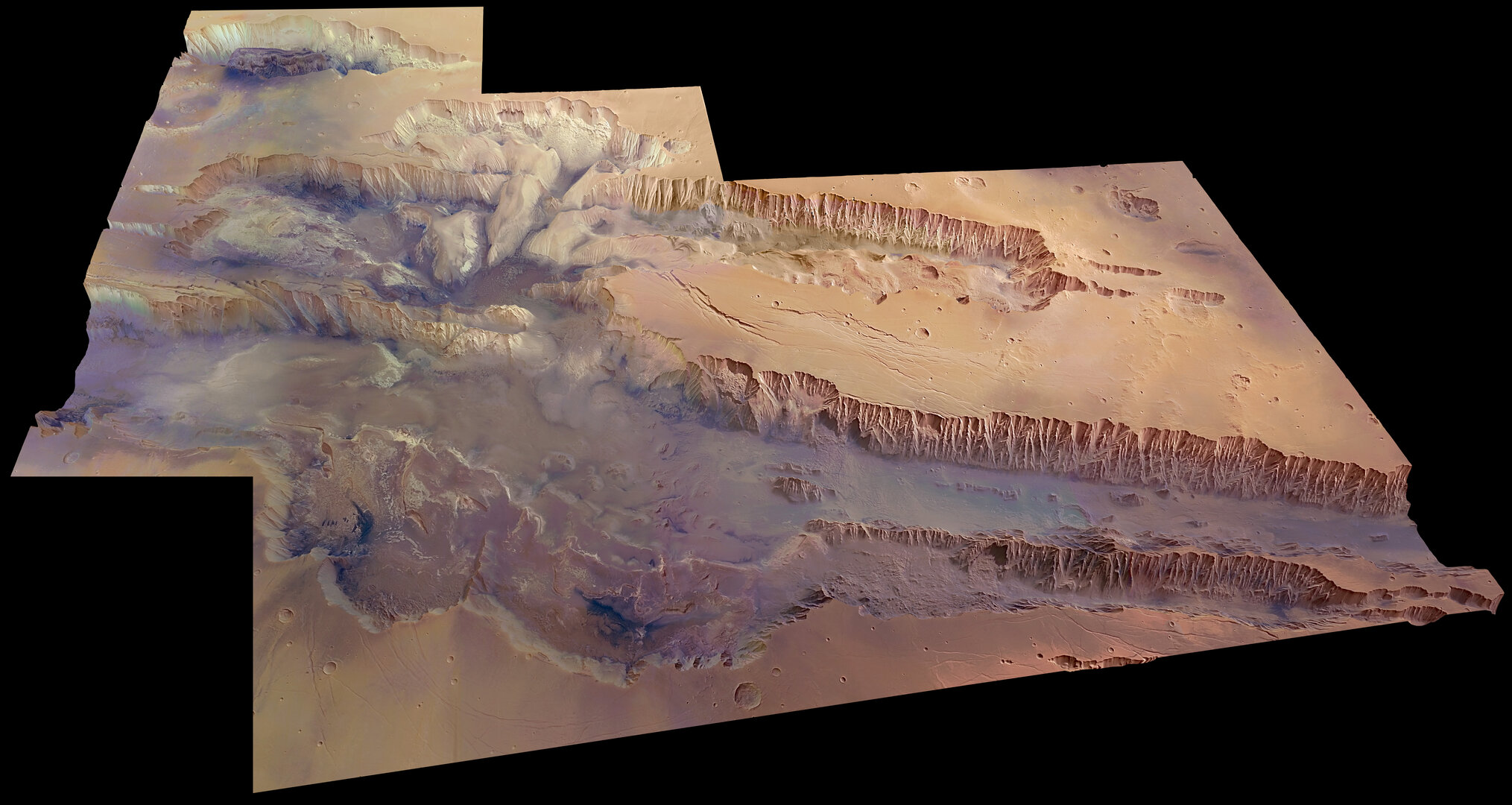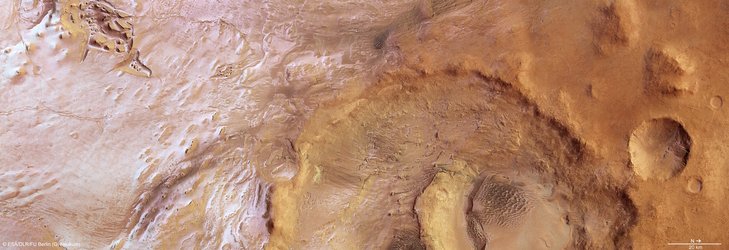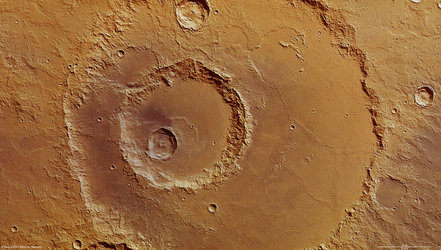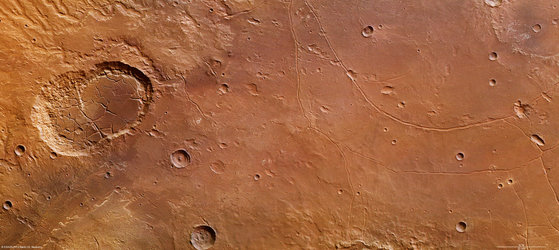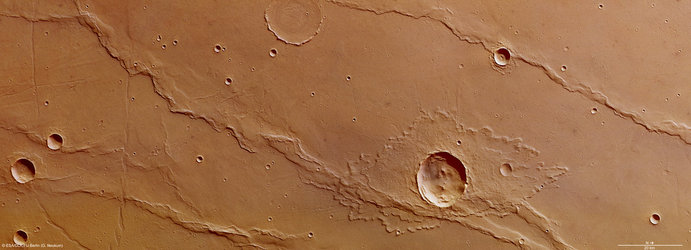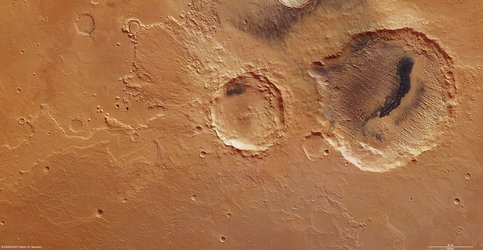The Solar System’s grandest canyon
Earth’s Grand Canyon inspires awe for anyone who casts eyes upon the vast river-cut valley, but it would seem nothing more than a scratch next to the cavernous scar of Valles Marineris that marks the face of Mars.
Stretching over 4000 km long and 200 km wide, and with a dizzying depth of 10 km, it is some ten times longer and five times deeper than Earth’s Grand Canyon, a size that earns it the status of the largest canyon in the Solar System.
Seen here in new light and online for the first time, this bird’s-eye view of Valles Marineris was created from data captured during 20 individual orbits of ESA’s Mars Express. It is presented in near-true colour and with four times vertical exaggeration.
A wide variety of geological features can be seen, reflecting the complex geological history of the region.
The canyon’s formation is likely intimately linked with the formation of the neighbouring Tharsis bulge, which is out of shot and to the left of this image and home to the largest volcano in the Solar System, Olympus Mons.
The volcanic activity is revealed by the nature of the rocks in the walls of the canyon and the surrounding plains, which were built by successive lava flows.
As the Tharsis bulge swelled with magma during the planet’s first billion years, the surrounding crust was stretched, ripping apart and eventually collapsing into the gigantic troughs of Valles Marineris.
Intricate fault patterns have also developed due to the imposing extensional forces; the most recent are particularly evident in the middle portion of the image and along the lower boundary of the frame.
Landslides have also played a role in shaping the scene, especially in the northern-most troughs, where material has recently slumped down the steep walls. Mass wasting has also created delicate erosion of the highest part of the walls.
Strong water flows may have reshaped Valles Marineris after it was formed, deepening the canyon. Mineralogical information collected by orbiting spacecraft, including Mars Express, shows that the terrain here was altered by water hundreds of millions of years ago.


